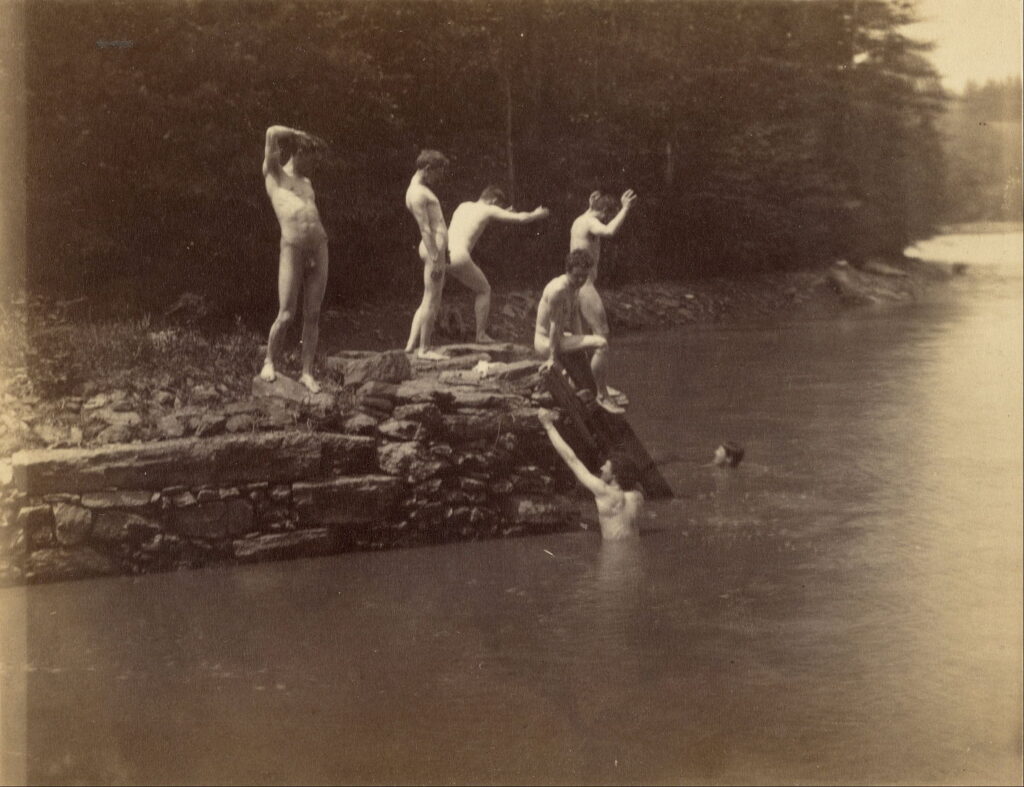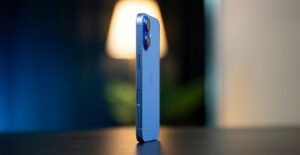Painting and Photography: Early experiments

Painters were among the pioneers of photography, as many of them used the camera obscura or camera lucida as an optical aid to drawing. But until the early nineteenth century there was no practical way to fix that image to make it permanent. As various chemical processes were developed and improved to the point where photographs became readily available, painters saw the threat to their effective monopoly, particularly in the lucrative business of portraits.
Photography quickly became all the rage. A few famous painters had their portraits taken: in 1847, John Jabez Edwin Mayall made a daguerreotype of JMW Turner, just four years before his death, and went on to take the first carte-de-visite photos of Queen Victoria in 1860.
Frederick Daniel Hardy (1827–1911), The Young Photographers (1862), further details not known. Wikimedia Commons.
The camera in Frederick Daniel Hardy’s The Young Photographers (1862) is almost hidden beneath the bright red cloth covering it and the photographer. The message that photography was just child’s play may not have been what he intended, and wasn’t true at that time.
Paintings of photography seem to have peaked around 1870, when photographs were still relatively novel and unusual, and not perceived as much of a threat to the painter.
Philipp Sporrer (1829-1899), The Photo (1870), oil on canvas, 81.5 x 63.5 cm, location not known. Wikimedia Commons.
Philipp Sporrer’s The Photo (1870) is probably the most pointed painted propaganda. The young photographer is not the sort of man you would leave your wife or daughter with. He’s down at heel, unkempt, and his straw hat is abominably tatty. His studio is poorly-lit, probably an old shed, its floor littered with rubbish, and its window broken. His subject is manifestly poor and uncouth, sitting in ill-fitting clothes and picking his nose as he waits for the photographer to fiddle with his equipment.
Lajos Bruck (1846–1910), Fényképész (The Photographer) (1870), oil on canvas, 74 x 94.5 cm, Private collection. Wikimedia Commons.
Lajos Bruck’s The Photographer (1870) is perhaps fairer to the new medium, with a whole village and their innumerable children being cajoled into smiles ready for the camera. The itinerant photographer’s partner, though, seems disinterested, as she sits resting her head against her hand and looking away.
Pascal Dagnan-Bouveret (1852–1929), Une noce chez le photographe (A Wedding at the Photographer’s) (1879), oil on canvas, 120 x 81.9 cm, Musée des Beaux-Arts, Lyon, France. Wikimedia Commons.
Pascal Dagnan-Bouveret’s A Wedding at the Photographer’s (1879) seems more calculated. Hugely successful at the Salon, this artist saw no threat from wedding photography, a market in which there was no competition between painting and photography. But he still takes the opportunity to show the photographer and his studio as being tatty and tawdry.
Gradually, painting started to become influenced by the nascent art of photography.
Gustave Caillebotte (1848–1894), Les Raboteurs de parquet (The Floor Scrapers) (1875), oil on canvas, 102 x 147 cm, Musée d’Orsay, Paris. Wikimedia Commons.
Gustave Caillebotte’s major painting of 1875 shows three workmen preparing a wooden floor in the artist’s studio at 77 rue de Miromesnil. It’s thoroughly detailed, Realist, and despite its innovative view and unusual subject, it conformed to the highest standards of the Salon at the time.
Caillebotte was hurt and angry when he was informed that this painting had been rejected by the Salon jury. The grounds given seem extraordinary now: apparently the jury was shocked at this depiction of the working class at work, and not even fully-clothed. It was deemed to have a ‘vulgar subject matter’ unsuitable for the public to view. Or was it really because of his wide-angle photographic effect?
Gustave Caillebotte (1848–1894), Paris Street, Rainy Day (1877), oil on canvas, 212.2 x 276.2 cm, Art Institute of Chicago, Chicago, IL. Wikimedia Commons.
Caillebotte was one of the first established painters to experiment with photography, as demonstrated in another wide-angle view of Paris Street, Rainy Day from 1877.
Soon, Thomas Eakins was using photographs to aid his painting.
Circle of Thomas Eakins (1844–1916), Eakins’s Students at the “The Swimming Hole” (1884), albumen silver print, 9.3 x 12.1 cm, The Getty Center, J. Paul Getty Museum, Los Angeles, CA. Wikimedia Commons.
His preparatory studies for Swimming (1885) grew from a series of photographs taken by the artist and his friends. But photos never replaced his own sketches: for this work, Eakins made several figure studies, details such as the dog, and different landscape backgrounds, and then brought them together in oil sketches.
Thomas Eakins (1844–1916), Swimming Hole (sketch) (1884), oil on fiberboard mounted on masonite, 22.1 × 27 cm, The Hirshhorn Museum and Sculpture Garden, Washington, DC. Wikimedia Commons.
Once he was happy, he embarked on his final version. In at least some cases, including his paintings of shad fishing from 1881-82, the figures in his Arcadia (c 1883), and Swimming (1885), he put final photographic images into a ‘magic lantern’ projector, which he then projected at the canvas.
He developed a sophisticated system not only for using the projected image to make a graphite underdrawing, but as the painting progressed, to incise key points and lines of reference in the paint surface. This enabled him to create paintings that were accurately calibrated to his reference images: a great advance on the traditional system of enlargement using grids, and one factor in his detailed realism. This technique was discovered by Mark Tucker and Nica Gutman.
Thomas Eakins (1844–1916), Swimming (The Swimming Hole) (1885), oil on canvas, 70.2 × 93 cm, Amon Carter Museum of American Art, Fort Worth, TX. Wikimedia Commons.
Together with other photos and various studies, Eakins then painted Swimming (The Swimming Hole) in 1885.
Paul Louis Martin des Amoignes (1858–1925), In the Classroom (1886), oil on canvas, 68.5 × 110.5 cm, location not known. Wikimedia Commons.
Paul Louis Martin des Amoignes’ wonderful In the Classroom was painted the following year. It bears unmistakeable evidence that it was either painted from photographs or strongly influenced by them. One boy, staring intently at the teacher in front of the class, is caught crisply, pencil poised in his hand. Beyond him the crowd of heads becomes more blurred.
In Amsterdam, George Hendrik Breitner painted from photographs of his model Marie Jordan (1866-1948), whom he later married.
George Hendrik Breitner (1857–1923), Marie Jordan Nude, Lying on the Bed (c 1888), photographic print, further details not known, Rijksmuseum Amsterdam, Amsterdam, The Netherlands. Wikimedia Commons.
This photographic print of Marie Jordan Nude, Lying on the Bed from about 1888 is one of a series he made at about the same time that he was working on a painting of her.
George Hendrik Breitner (1857–1923), Reclining Nude (c 1887), media and dimensions not known, Centraal Museum, Utrecht, The Netherlands. Wikimedia Commons.
Although conventionally dated to about 1887, there can be little doubt that Breitner’s Reclining Nude was based on that print.




